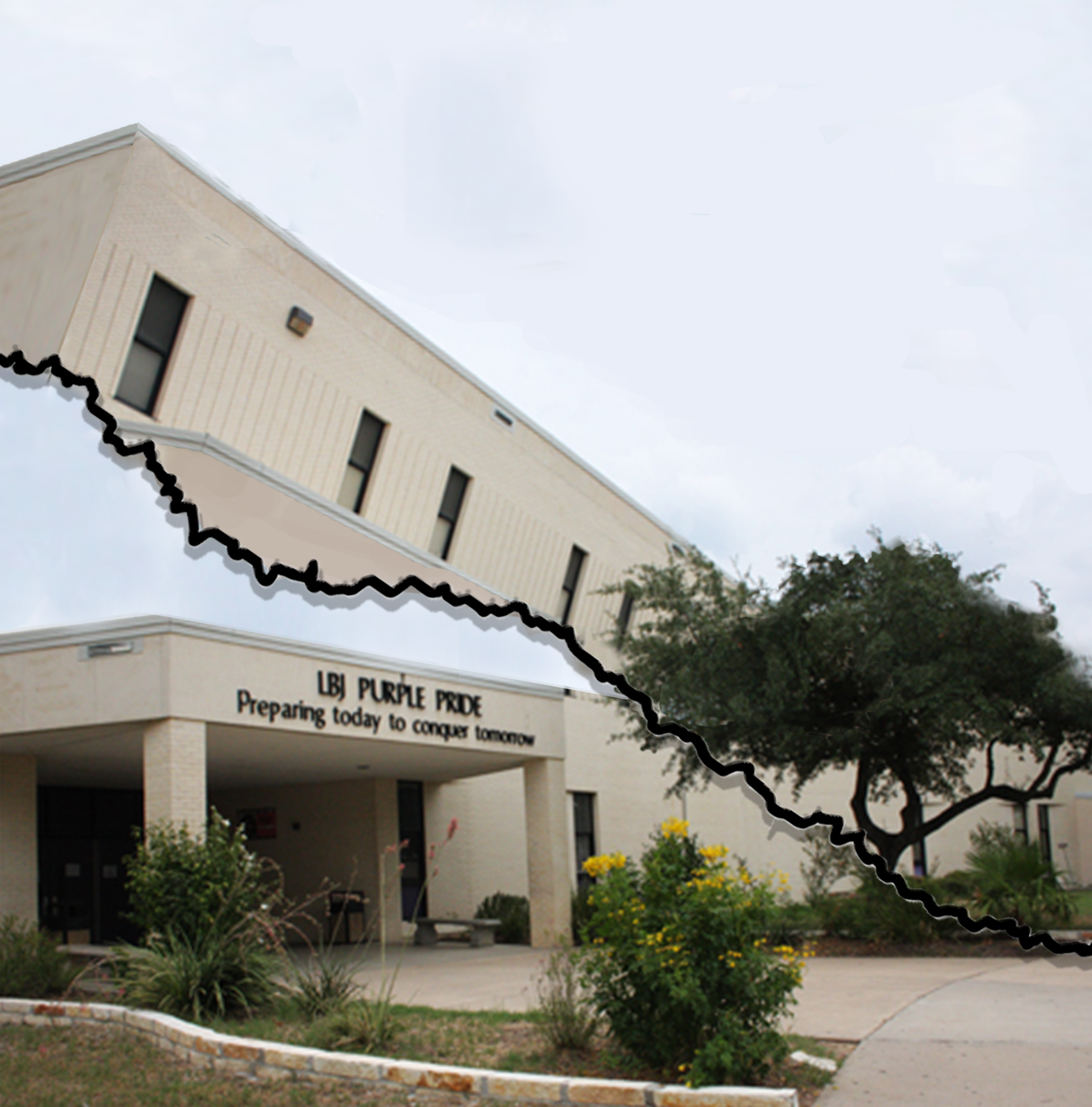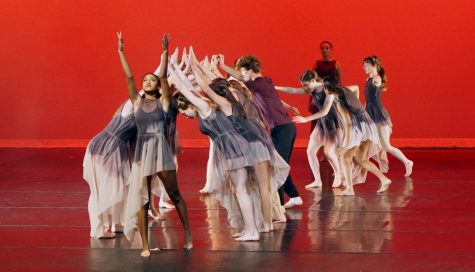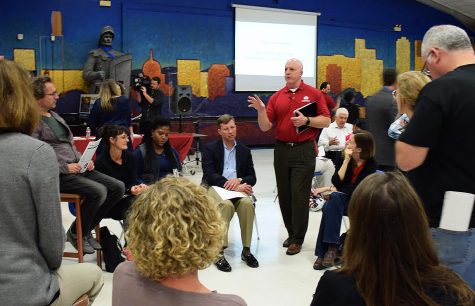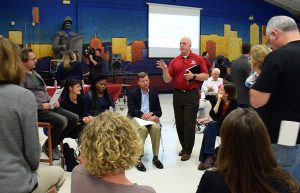Bond’s benefits outweigh rivalry
A quarter century of athletic competition a small price to pay to make four schools better
November 3, 2017

The first McCallum football game I ever attended was versus our fiercest rival, Lyndon Baines Johnson High School. I had heard from a variety of people that the LBJ football game was one of the only ones worth attending, and so I went with that in mind.
Before my time at McCallum, I went to a very small private school with no sports teams, few after-school clubs and 12 people in my eighth-grade class. School pride was never a familiar practice for me. McCallum, in contrast, is very different.
As I pulled up to Nelson Field with countless other enthusiastic students, I was enveloped in a sense of pride and community. I was now a part of the river of McCallum’s blue and grey, and soon fell in with the roar of the student section. I witnessed the latest game of a 25-year rivalry. A game that, since 2004, has predicted what school will—at the very least—share a district title each season. A game that might be one of the last.
If passed, the 2017 Austin Independent School District bond plans to have the Liberal Arts Science Academy and Lyndon Baines Johnson Early College High School separate; LASA would move to what is now Eastside Memorial High School, with LBJ remaining where it currently is. Then, Eastside would have to relocate to what is now the Alternative Learning Center, causing a domino effect of campus relocations throughout the district.
Alone, LBJ would stand at approximately 850 students, and in UIL’s football terms, that means it would become a 4A school making them ineligible to play in the same district with McCallum, a 5A team. Losing our district rival of 25 years would be sad, but there are more than enough beneficial things to outweigh the loss of a rival.
LBJ would have the campus to itself, and with it, space to grow. A health professional school will be built on campus, starting a new a medical magnet program that will partner with Seton Hospital. Upon graduating, students will be prepared for their futures with a diploma, an associate’s degree in health sciences, applicable workplace experience and a guaranteed interview for post-secondary employment with one of Seton’s industry partners. The program will also allow students to preview and prepare for five different medical and health fields. After being trapped under LASA’s shadow for years and receiving little attention compared to their upstairs neighbor, the value of these additions to LBJ should not be understated. The added advantage of partnering with Seton Hospital would draw more students to LBJ, who would be enticed by these programs. These additional college-level courses will apply real-life skills and learning geared towards future occupations in their high school classrooms. The courses aim to increase job opportunities for LBJ students when they come out of both high school and college.
There are, of course, some concerns with the coming AISD bond. People worry that separating LASA and LBJ will undo everything the district has done to desegregate the schools. But while LASA and LBJ have made progress—the two schools share electives, sports, band and clubs—the degree of progress doesn’t justify rejecting the latest AISD bond. Students from LASA and LBJ frequently go through their days without interacting. The true cause of the modern-day segregation occurred when LASA became it’s own school. It was originally two separate magnet programs: the Science Academy at LBJ and the Liberal Arts Academy at Johnston High School (now Eastside Memorial).
The stagnancy that comes with voting “no” is just about a death sentence for all of the schools affected. The split would impact many Austinites, even though who aren’t going to their home schools.
The Alternative Learning Center, according to AISD, is built on second chances: ALC enrolls at risk students and one fifth of their student body has limited English proficiency. The ALC, however, is simply passed over in the AISD bond. The bond mentions no plans to where ALC will go next, what funding they will receive, or any specific changes it will undergo.
But, the ALC doesn’t need fundamental changes. For instance, Austin Learning Center doesn’t need much room to expand. The school is built to help get students on their feet and back at their home schools—their student body shouldn’t be growing or planning to grow. Some other additions, like the restructuring of the school, would be welcomed.
The opportunities presented in the LBJ and LASA separation are powerful. They propose benefits to students, teachers and communities at four separate schools. This should not be downplayed solely because AISD has not finalized everything—the district seeks to repair decades of dilapidation and neglect. This is just the first step in a significant process. If LASA and LBJ remain together, they will barely squeeze in that single campus and their problems won’t improve. Neither school will have room to grow, the lack of diversity would continue to be disputed, and the district would be at a standstill. That being said, there are still some missing pieces in the AISD bond and needs that must be met. Concerned citizens should continue to bring other issues to the district’s attention; don’t let your concerns go ignored, but at the same time, allow AISD to foster growth for both LASA and for LBJ. That starts with letting the schools separate.
























